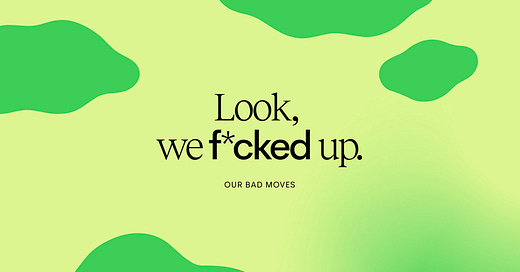Sustainability, transparency, and responsible production are buzzwords that make reality.
They are tightly paired with the modern affluent consumers’ aspiration of doing good through their actions. Ace & Tate, an eyewear brand, recently published a self-critical post “Look, we f*cked up. Our bad moves” in the effort to share its journey towards a more …
Keep reading with a 7-day free trial
Subscribe to The Sociology of Business to keep reading this post and get 7 days of free access to the full post archives.




